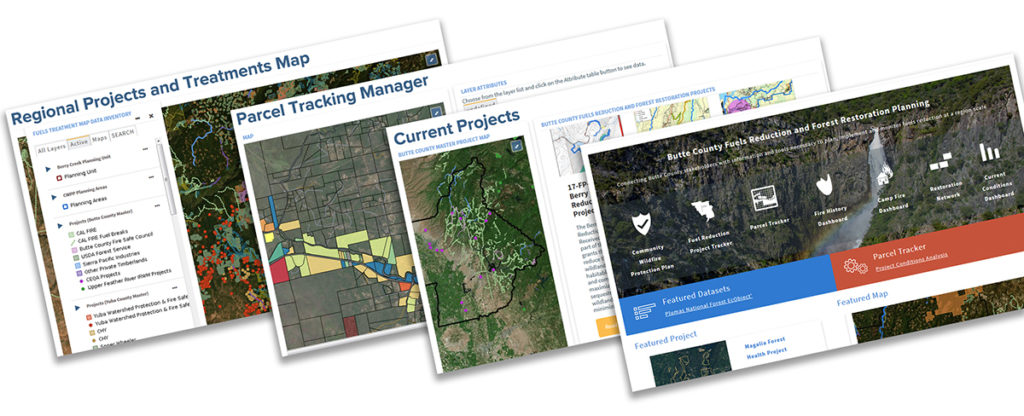By Holly Jorgensen
Collaborative management efforts are essential for protecting, restoring and maintaining healthy ecosystems. Watershed management requires coordinated policy and management action not only at the local level, but at regional and state levels as well. Successful watershed management should reflect the values of the community and implement actions with achievable outcomes.
Successful watershed management also requires coordinated data and information collection, and that data management and accessibility throughout the state is crucial to realizing the goals and objectives set forth in watershed planning efforts.
In March of 2015, SRWP partnered with the Calif. State Water Resource Control Board and 34 North to develop a web portal customized for the Sacramento River watershed. The Sacramento River Watershed Data Portal provides a platform for tracking and reporting watershed health improvements associated with local, regional, and statewide planning efforts and assists our partners individually and collectively by sharing the results of watershed efforts with our funders, partners and state and federal agencies. The data portal demonstrates the benefits of effective watershed management efforts in the region and provide beneficiaries with information, outcomes, and investment opportunities.
SRWP’s data portal uses the software platform developed for other data portals, including Calif. Estuaries, the San Joaquin Regional Monitoring Program, San Joaquin River Real Time Management Program, The Bay delta: Baydeltalive.com and DWR’s 1641 interactive reporting tools for California.
The data managed in each portal is managed at the regional level and shared with users of all other data portals, allowing for larger watershed assessment and analysis so that we can mutually benefit and learn from each other’s efforts.
SRWP’s data portal gives users access to the extensive monitoring data, studies, reports and articles in our watershed. You can compile maps and graphs to better visualize available data and answer watershed questions. The portal will also help the state more easily identify gaps in data to help drive new data collection efforts. In addition to projects and regional data, you can view, combine and download all real time data, CEDEN, SRWP monitoring data, USFWS, CAFWS, DWR, NOAA, CalFire, and more. We also have over 1,000 watershed reports, images, GIS data files and other important resources cataloged and ready for use.
SRWP is working with key stakeholders in the region to develop a strategy for regional data management and integration. Visual data and information enhance people’s awareness of the relationship between watershed management and resource conditions, and that awareness strengthens stakeholders’ involvement in collaborative watershed management efforts. The strategy will include an investment model and incorporate recommendations from stakeholders, SB 1070, the Monitoring Council, the Delta Stewardship Council’s Environmental Data Summit paper, and AB 1755.
Sustainable funding and investments will ensure the portal’s longevity and facilitate future enhancements including the integration of new data, data organization, customization based on use cases from stakeholders, custom data analytics across various datasets and retrospective analysis. Sustainable, baseline funding for watershed management efforts including the data portal, must come eventually from its beneficiaries through long-term commitments in either or both of two forms: fees and in-kind services.
SRWP’s current data management efforts include engaging stakeholders in the development of key topics like Forest Health, Community Risk and Assessment and Collaborative Forest Restoration to refine or add to them. The data portal topics represent stakeholder interests and needs that will evolve as environmental policies, laws, and conditions change. Keeping apprised of current resource issues and management needs will require ongoing stakeholder involvement. By continuing to partner with key watershed stakeholders as a vehicle to develop, expand, endorse, and maintain the portal, we hope to ensure that regional watershed management efforts are developed, implemented and effective in achieving desired outcomes.

